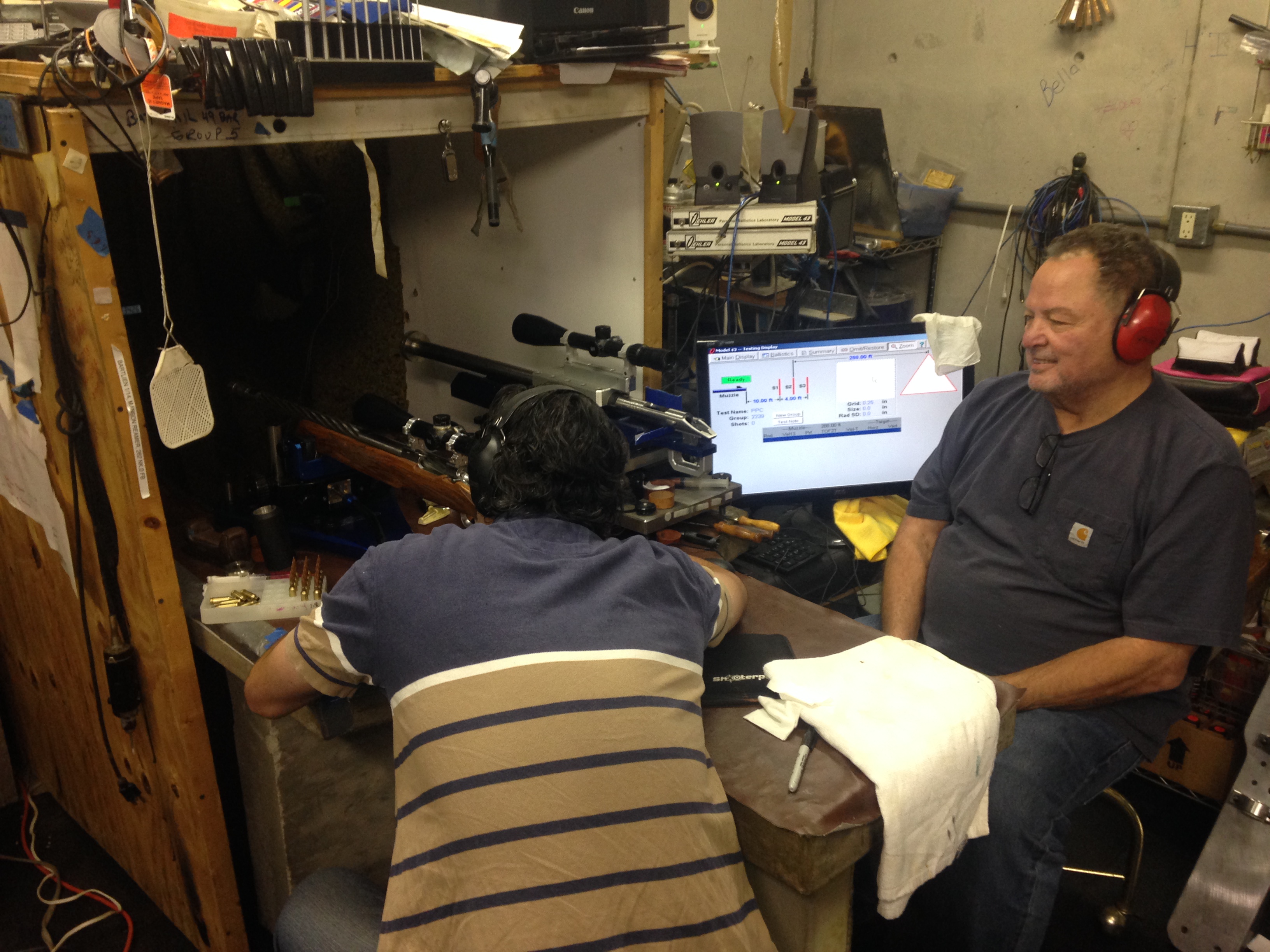ANNEALING UNDER THE MICROSCOPE
Part 5 (Section 3)
Alex & Matt Findlay with Lou Murdica - 28/11/2019
Copyright AMP ANNEALING 2019
Stage Three: Indoor testing.
This final stage of out testing was at the "ultraviolet” end of the accuracy spectrum. Testing was done by Lou Murdica in an underground 100-yard range in California. "The Tunnel” is climatically and acoustically controlled, and it has been the venue for a large number of product tests.
Lou himself is very well known in the extreme accuracy world. These are just some of his achievements:
- 1991 WON TWO GUN AGGREGATE BENCHRESTWORLDCHAMPIONSHIP INFRANCE
- 1997. SET NBRSA LT GUN 1000 YARD 6 GROUP AGGREGATE WORLD RECORD
- 1997. SET NBRSA LT GUN 1000 YARD 6 GROUP SCORE AGGREGATE WORLD RECORD
- 1997. WON NBRSA LONG RANGE LT GUN 1000 YARD SCORE NATIONALS CHAMPIONSHIP
- 1997 WON NBRSA LONG RANGE 1000 YARD GROUP NATIONALS CHAMPIONSHIP
- 2007. SET NBRSA LT GUN 600 YARD SINGLE TARGET SCORE WORLD RECORD
- 2008 SET. 300 YARD HV VARMINT AGGREGATE NBRSA WORLD RECORD
- 2008 WON. LONG RANGE HV VARMINT GRAND AGGREGATE
- 2013 SET. NBRSA VFS-LONG RANGE 200 YARD AGGREGATE WORLDRECORD
- 2013 WON. NBRSA VFS-LONG RANGE 100 YARD NATIONALS CHAMPIONSHIP
- 2013. WON. NBRSA VFS-LONG RANGE 200 YARD NATIONALS CHAMPIONSHIP
- 2013. WON. NBRSA VFS-LONG RANGE 300 YARDNATIONALS CHAMPIONSHIP
- 2013 WON NBRSA VFS-LONG RANGE 300 GRAND AGGREGATE NATIONALS CHAMPIONSHIP
- 2013. WON. NBRSA VFS-LONG RANGE 100-200 AND 200-300 GRAND AGGREGATE NATIONALS CHAMPIONSHIP
- 2016 F-CLASS NATIONAL CHAMPIONSHIPS IN PHOENIX FTR- CLASS WON. 11 MEDALS
- 2017. F-CLASS NATIONAL CHAMPIONSHIPS IN Lodi, Wisconsin Open class won 5 medals
- 2018 F-class Nationals in Raton NM took third overall and Won 1000 yd match. high senior gold medal
- 2018 Nationals Won 1000 yd match. high senior gold medal
- Made high master in mid-range and long range and master in rimfire
- Lou helped develop IMR 8208, LT-32, LT-30 powders, and March Scopes.
- He does ongoing testing for: SHILEN BARRELS, BARTLEIN BARRELS, BERGER BULLETS and WESTERN POWDERS
When we visited Lou in July 2019, we shot several videos. One of those showed him shooting a 6.5 Creedmoor, ejecting the case, annealing it, reloading and then shooting the same case again. We called the video "One case – Two shots – One hole”. It attracted a lot of comment.
When formatting a test for Lou that didn’t just repeat our Stage Two outdoor testing, we thought, why not repeat the "One case” video, but this time make it twenty shots with one case. In fact, why not compare two cases, one annealed every shot x 20, and one with no annealing x 20 shots. The reloading sequence was exactly the same as our first video, but this time Lou shot a 30 PPC.
This video starts with the July "One case – Two shots – One hole” video and then shows the two x 20 shot strings.
Notes on the Oehler Model 43
display: The Oehler system seen on the
screen in Lou’s video is capable of recording a maximum 10 shot string. The
first shot of any string always registers at the center of the target grid.
Therefore, when a twenty-shot group is shot, the two 10 shot electronic groups
will not "overlay” correctly compared to the real paper target.
Also, the screen shown in the video is "zoomed in” and the grid and bullet icons do not give a correct reference to group size. The annealed 20 shot string was actually still under 0.30” after nineteen shots. The twentieth shot, which looks in the video like a flier, actually just enlarged the group to 0.3405”.
20 shot x 100 yard groups, single case per group. 30 PPC.
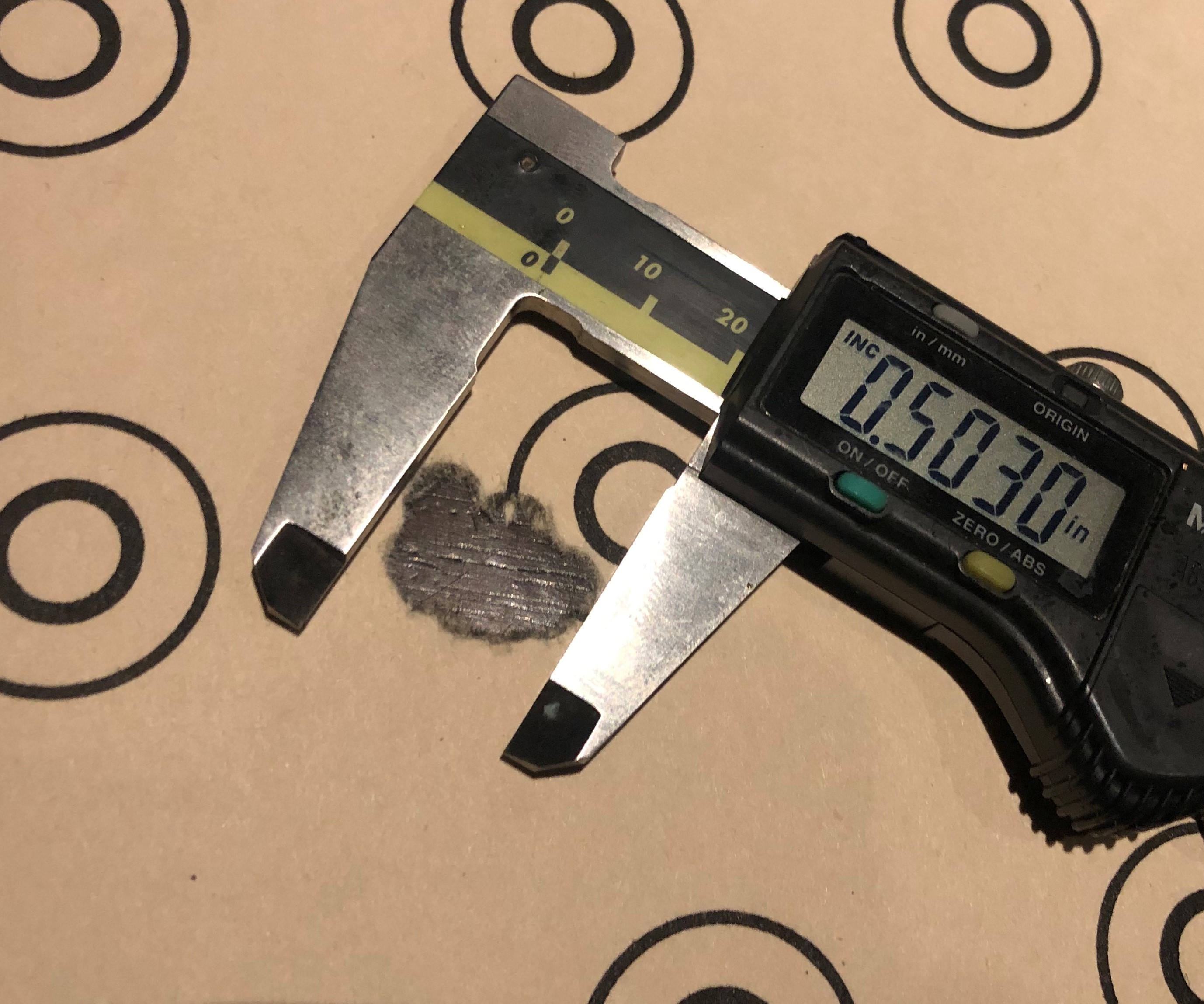
One Lapua case no annealing x 20 shots
ES = 77 FPS
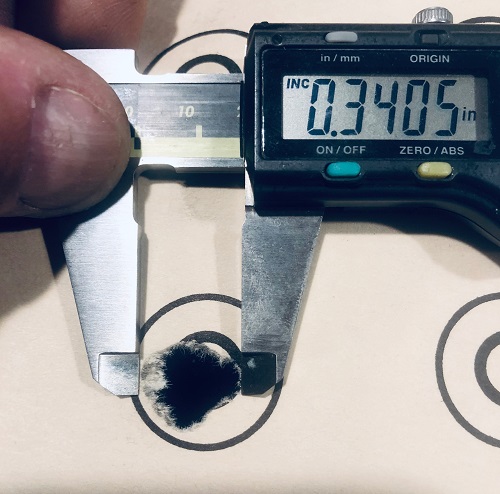
One Lapua case annealed every reload x 20 shots
ES = 36 FPS
This was no fluke. Lou repeated the
feat twice with a 308W. That rifle was an F-Class Golden Bear with Borerider
chamber in a Bartlein barrel. Below are the comparative 20 shot groups,
annealed v unannealed for both Peterson cases and Lapua cases.
20 shot x 100 yard groups, single case per group. 308 W.
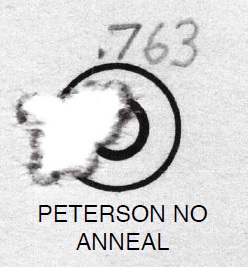
1 x Peterson case no
annealing x 20.
ES = 26 FPS
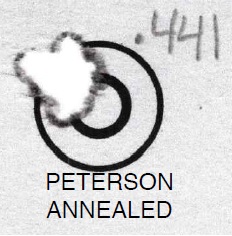
1 x Peterson case annealed every reload x 20.
ES = 29 FPS
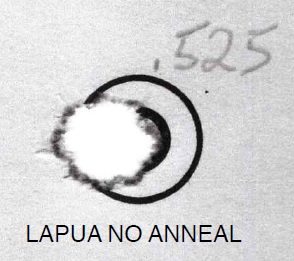
1 x Lapua case no annealing x 20.
ES = 42 FPS
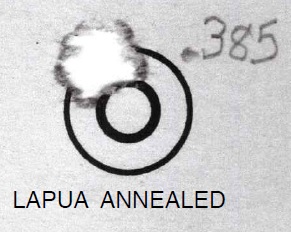
1 x Lapua case annealed every reload x 20.
ES = 35 FPS
Stage three summary
A notable feature of the stage three results was that none
of these 20 shot strings produced particularly low velocity extreme spreads.
Most short range benchrest competitors will confirm that ES just isn’t that
important at short range. It is only at long range that ES is a significant
factor in vertical shot distribution.
In all three twenty shot group comparisons, the annealed
case demonstrated a significant accuracy advantage over the unannealed case.
Annealing under the Microscope Part 5 overall summary.
Up until this study, we have always focused on researching
accurate and repeatable annealing of case necks and shoulders. We have spent
several years testing literally thousands of different cartridges, wildcats,
brands, lot numbers and neck turned variations. Our testing has been largely confined
to the laboratory, using micro-Vickers hardness testing equipment. We spent
well over a year just perfecting the AZTEC system of case analysis. We believe
that is a complete game changer for the reloader, allowing exceptionally
accurate annealing of almost any cartridge without the need for laboratory
testing.
We have also investigated the actual metallurgy of annealing
in detail. To do that we have worked with several independent, accredited
metallurgy laboratories.
Based on the feedback of several thousand customers, we knew
that our annealing system produced real world benefits. Many customers have
been extremely helpful in reporting great data back to us. Unfortunately, with
the limited facilities available in New Zealand, it was almost impossible for
us to quantify the benefits by conducting our own meaningful ballistics
testing.
Working with Lou Murdica, and also the team from Strategic
Edge has finally allowed us to accumulate a body of quality data. We have been
able to compare annealed v not annealed cases in multiple rifles, cartridges
and shooting applications.
We believe the results are conclusive. On average annealing
with our system produces lower velocity extreme spreads, and tighter groups. It
does this by allowing much more precise and repeatable case sizing dimensions,
and much more repeatable neck tension. Annealing Made Perfect eliminates those
variables, allowing reloaders to concentrate on the many other elements which
go into the perfect reload.
Special thanks:
This project would not have been possible without the
participation of a number of expert shooters. Thanks once again to Lou Murdica,
Tony Shankle, Dennis Dean, David White, Ken Faulk and Greg Micklow.

